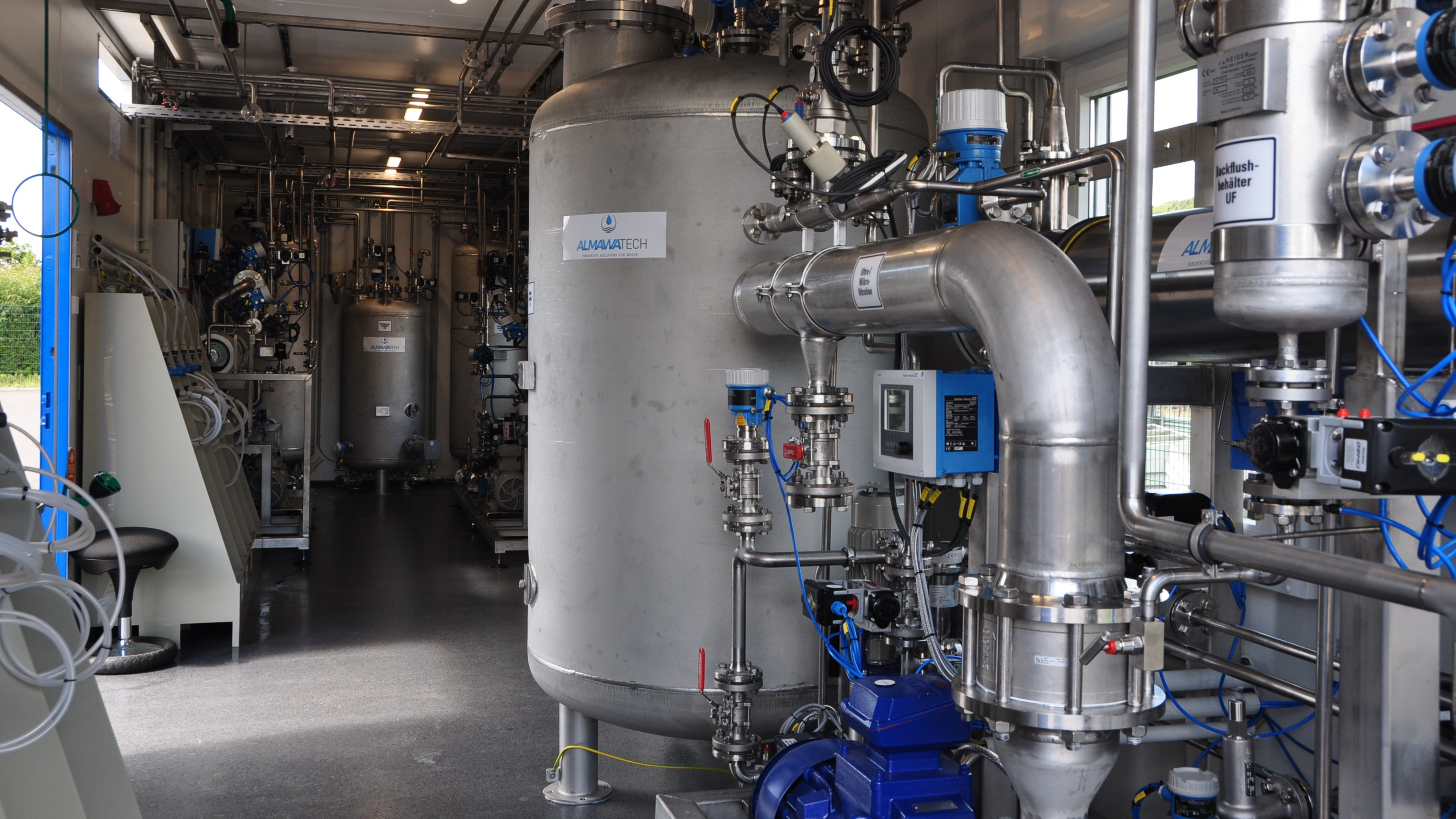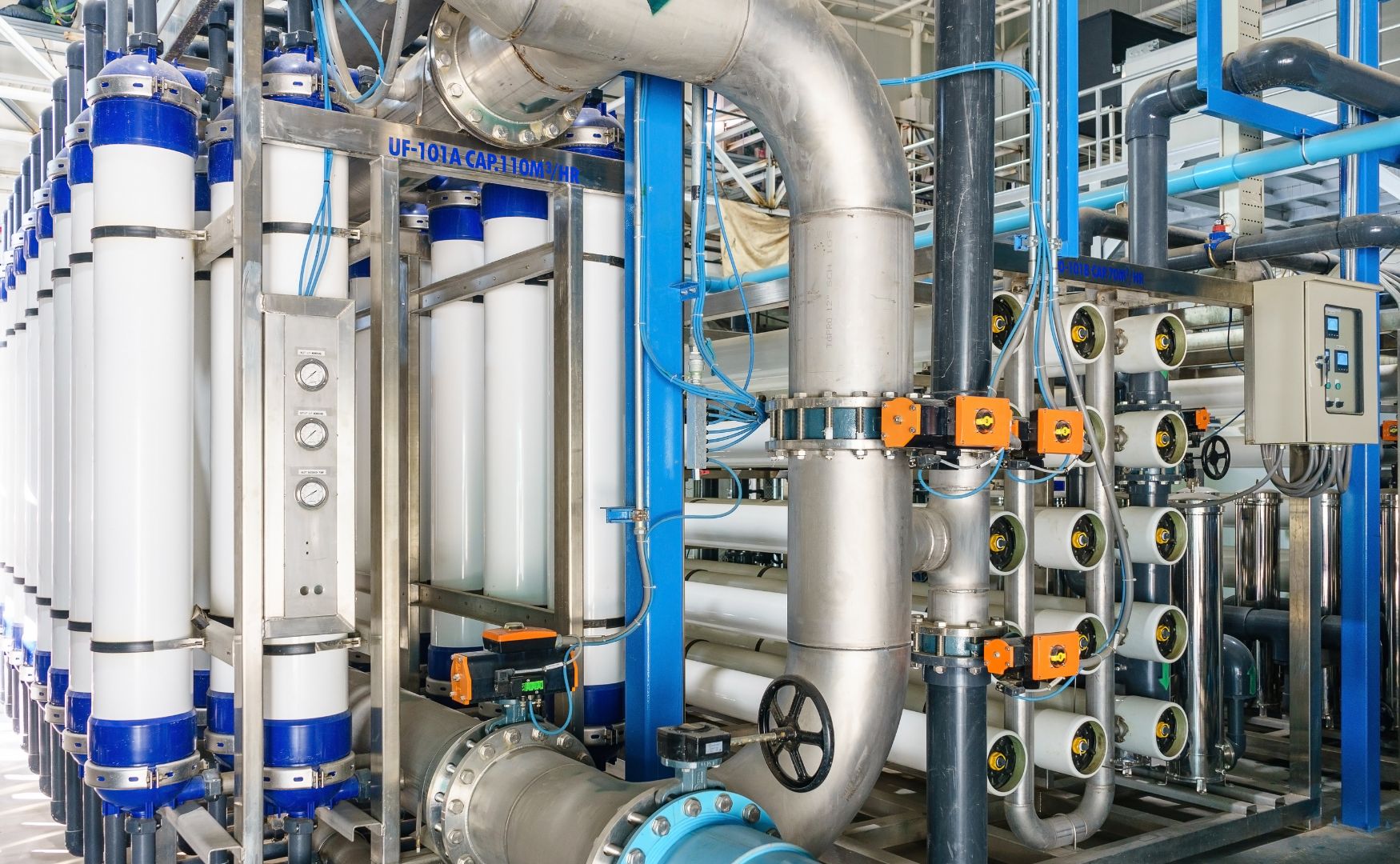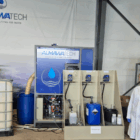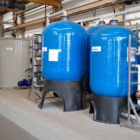Microfiltration (MF) is an essential component of modern water treatment and wastewater treatment technologies. The process uses membranes with a typical pore size of 0.1 to 10 micrometers to efficiently remove particles, colloids, bacteria and other microorganisms. It is a pressure-driven process that is characterized by its low energy requirements and versatility.
Table of contents
Technical basics
Microfiltration systems consist of several central components:
Diaphragms
The diaphragms are made of robust polymer materials such as polyethersulfone (PES), polytetrafluoroethylene (PTFE) or ceramic. These materials guarantee high chemical and thermal stability. The membranes are available in different geometries: hollow fiber, flat or ceramic membranes.Pump systems
A low pressure of 0.1 to 2 bar is required for filtration. Efficient pump systems ensure an even flow of water through the membranes.Control and monitoring systems
To ensure stable operation, microfiltration systems are equipped with automatic controls that monitor the filtration pressure, flow rate and membrane conditions.Cleaning systems
Fouling, i.e. the build-up of organic substances and microorganisms, is minimized by regular backwashing and chemical cleaning in place (CIP).
Functionality
Microfiltration separates particles and microorganisms through a combination of sieving action and surface filtration. The raw water is pressed through the membrane, whereby particles larger than the pore size are retained. The purified water (permeate) can be used directly or fed into further treatment processes. Backwashing regularly removes accumulated solids to maintain the performance of the membrane.

Photo: ALMA Mem UF microfiltration module in stainless steel design, installed in the ALMA Modul technical room container
Areas of application
Drinking water treatment
- Removal of pathogens such as bacteria, parasites and suspended solids to make drinking water hygienically safe.
Waste water treatment
- Often used in membrane bioreactors (MBR) to remove solids and microorganisms from wastewater streams.
Food and beverage industry
- For clarifying liquids such as beer, wine and milk to ensure high product quality.
Pharmaceutical and chemical industry
- Provision of ultrapure water and removal of unwanted particles from process solutions.
Semiconductor industry
- Particle removal in ultrapure water treatment to support the sensitive production of microchips and other electronic components.
Swimming pool technology
- Removal of suspended solids and organic impurities to improve water quality.
Advantages
High efficiency in particle removal
Suspended particles, bacteria and larger microorganisms are reliably removed.Low energy consumption
Due to the low operating pressure, microfiltration is an energy-efficient technology.Flexibility and modularity
systems can be adapted to different requirements and flow rates.

Photo: Individual ALMA MEM UF microfiltration systems for industrial water treatment
Challenges
Fouling and scaling
Deposits of organic substances and salts can impair the efficiency of the membranes. Good pre-treatment of the raw water and regular cleaning are crucial.Limited retention capacity for dissolved substances
Dissolved salts and smaller organic molecules pass through the membranes and may require downstream processes such as nanofiltration or reverse osmosis.
ALMAWATECH solutions
ALMAWATECH offers customized microfiltration systems that are designed to meet the specific requirements of your industry. Our systems are characterized by high efficiency, durability and state-of-the-art control technology. With pilot tests in our technical center or directly at your site, we determine the optimum system design and guarantee you a cost-efficient solution.
Conclusion
Microfiltration systems are indispensable tools in modern water and wastewater treatment. They offer an effective and economical solution for the removal of suspended solids and microorganisms and are of crucial importance in numerous industries. Their versatility and high performance make them a key technology for sustainable water treatment systems.
For further information on our products, please feel free to contact us at any time!







